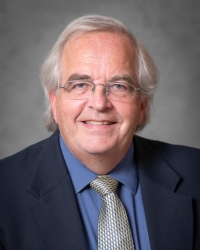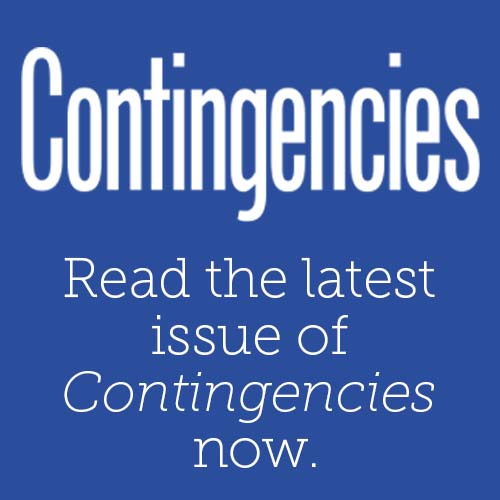The July “Professionalism Counts” column, written by current members of the Committee on Qualifications, looks at the U.S. Qualification Standards 10 years after the current version came into effect in 2008. (Actuarial Update, July 2018)
More than 2,000 people attended the Academy’s June 18 professionalism webinar, “The Code of Professional Conduct—Learning From the Mistakes of Others,” which walked attendees through mistakes that have landed actuaries on the wrong side of the Code, and offered insight on the Code’s key precepts. (Actuarial Update, June 2018)
In “Self-Regulation of the U.S. Actuarial Profession: A Model for the World,” Academy Past President Cecil Bykerk writes about his recent experience at the International Congress of Actuaries in Berlin. (Actuarial Update, June 2018)
Academy President Steve Alpert presented a session titled “Why Professionalism?” to about 100 attendees at the Actuaries Club of Philadelphia’s meeting on May 15, and Actuarial Board for Counseling and Discipline member David Driscoll delivered a professionalism presentation at the May 22 meeting of the Actuaries’ Club of Hartford & Springfield, in Hartford, Conn. (Actuarial Update, May 2018)
In “An SAO by Any Other Name,” Committee on Qualifications Chairperson Andrea Sweeny spells out why any actuary who is subject to the Code of Professional Conduct should clearly understand what a statement of actuarial opinion is. (Actuarial Update, May 2018)
The Academy’s president, Steve Alpert, and immediate past president, Bob Beuerlein, led April’s professionalism outreach efforts, sharing their insight with hundreds of actuarial science students about professionalism and the profession. (Actuarial Update, April 2018)
Wondering about the differences between the continuing education requirements of the U.S. Qualification Standards (USQS) and the continuing professional development requirements of other actuarial organizations? It is important for actuaries to understand the difference, and the Academy has created useful tools to help actuaries document their compliance with the USQS. (Actuarial Update, April 2018)
The Academy’s professionalism webinars—typically four per year—offer expertise on a range of professionalism topics across all practice areas, and insight from members of the Committee on Qualifications, Actuarial Standards Board, Actuarial Board for Counseling and Discipline, and other distinguished speakers from Academy boards and committees. (Actuarial Update, March 2018)
More than 2,200 people attended the Academy’s March professionalism webinar, “A Guided Tour of the U.S. Qualification Standards,” which took an in-depth look at issues and commonly raised questions received by the Committee on Qualifications. COQ members Tom Campbell, Keith Passwater, and Hal Tepfer engaged in a lively discussion of the experience requirement, what counts as a statement of actuarial opinion, the “look in the mirror” test, and more. (Actuarial Update, March 2018)
In “Disclosure: The Cornerstone of the ASOPs’ Strength,” Actuarial Standards Board (ASB) Chairperson Beth Fitzgerald outlines the ASB’s process in developing actuarial standards of practice (ASOPs) and the ASB’s role in what disclosures actuaries will need to make to comply with an ASOP, and specifically notes the importance of ASOP No. 41, Actuarial Communications. (Actuarial Update, February 2018)
“New Standards for the New Year,” by Actuarial Standards Board (ASB) Chairperson Beth Fitzgerald, highlights several new actuarial standards of practice (ASOPs)—Nos. 51, 52, and 53—offering explanations behind their promulgation last year, and the role of the ASB’s committees and task forces in creating the ASOPs. (Actuarial Update, January 2018)
Committing on an annual basis to professional objectivity is required to perform volunteer work for all those who participate in Academy committees. D. Joeff Williams, vice president of the Academy’s Council on Professionalism, outlined the policy with a request that volunteers and submit a conflict of interest (COI) acknowledgement and continuing education attestation as soon as possible. Interested parties must also acknowledge the COI policy. (Actuarial Update, January 2018)
In the “Tradecraft” Contingencies column, Council on Professionalism (COP) Chairperson Joeff Williams writes on “Building a Culture of Professionalism: A Resource Guide for Chief Actuaries,” covering COP’s professionalism mission and the Academy’s professionalism resources that are available to chief actuaries. (Contingencies, January/February 2018)
In “If You Get That Call,” Actuarial Board for Counseling and Discipline (ABCD) Chairperson Richard Block writes that compliance with the Code of Professional Conduct’s Precept 14, requiring the actuary to cooperate with the ABCD, often boils down to Will Rogers’ adage, “If you find yourself in a hole, stop digging.” (Actuarial Update, December 2017)
The final professionalism webinar of 2017 delivered a topic that many members have long requested—case studies and examples of professionalism issues that have come before the Actuarial Board for Counseling and Discipline (ABCD). “Tales From The Dark Side: Ethical Cases at the ABCD” featured ABCD members Godfrey Perrott and David Driscoll, who drew upon staples of popular culture to provide entertaining and enlightening examples of such issues. More than 2,300 people attended the Dec. 20 webinar, which was moderated by Academy General Counsel and Director of Professionalism Paul Kollmer-Dorsey.
“Professionalism Resources at Your Fingertips” spotlights the Academy’s many available professionalism resources via publications, the Code of Professional Conduct, the U.S. Qualification Standards (USQS), the Academy’s USQS Attestation Form, and via the Actuarial Standards Board and the Actuarial Board for Counseling and Discipline. (Actuarial Update, November 2017)
The actuarial standards of practice (ASOPs) require actuaries to take action, by stating what the actuary should do, consider, document, and disclose in the course of performing actuarial services. Actuarial Standards Board Chairperson Maryellen Coggins looks at “Reliance and the ASOPs: In Good Faith and Subject to Disclosure,” through the lens of reliance on third parties, reasonableness, and suitability of data. (Actuarial Update, October 2017)
As the third quarter comes to a close, it’s time to evaluate your annual required—and documented—continuing education (CE) requirements, writes Academy President Bob Beuerlein. CE is required under the U.S. Qualification Standards, and the Academy offers many opportunities for actuaries to gain their necessary credit, including the November Annual Meeting and Public Policy Forum. (Actuarial Update, September 2017)






